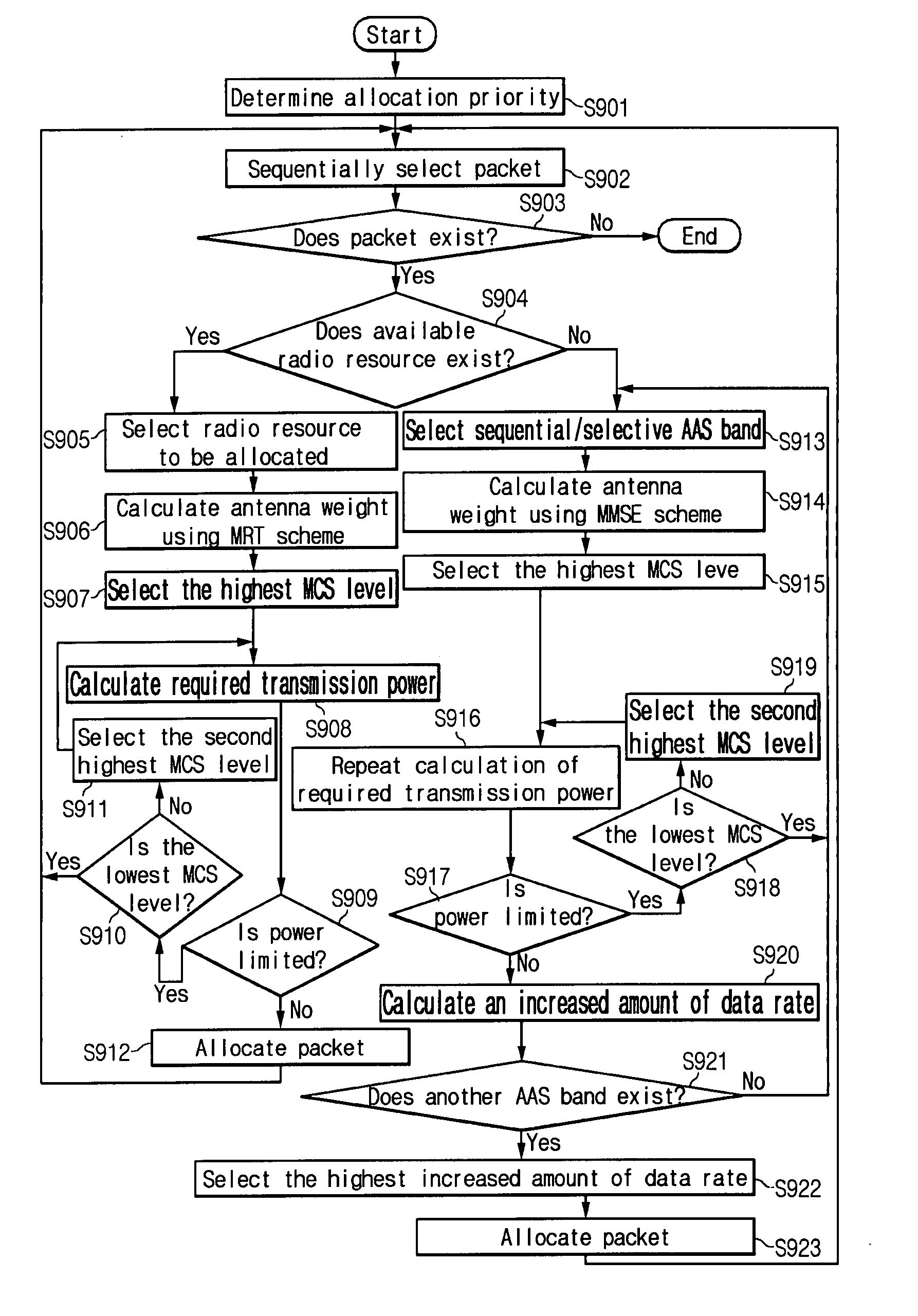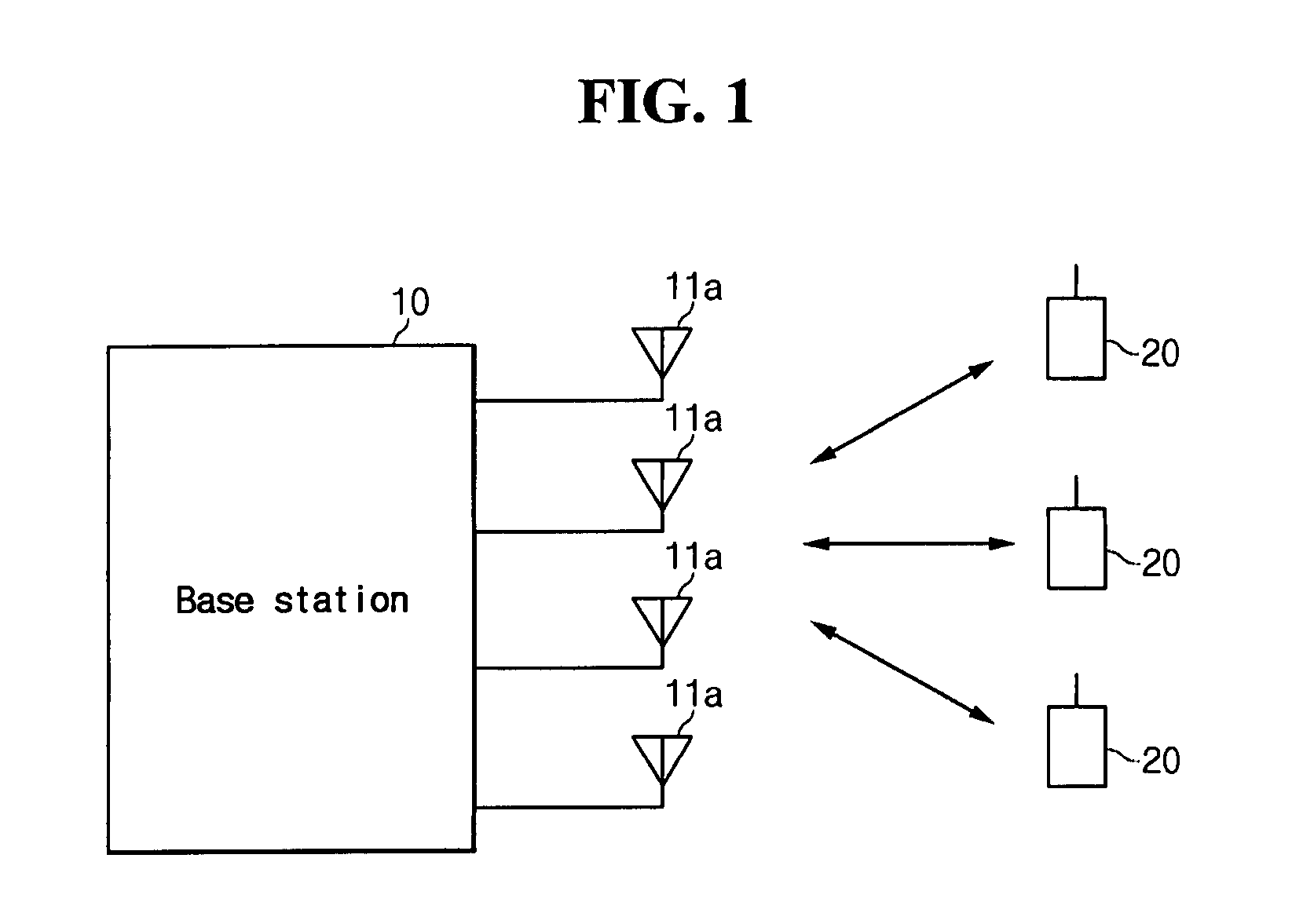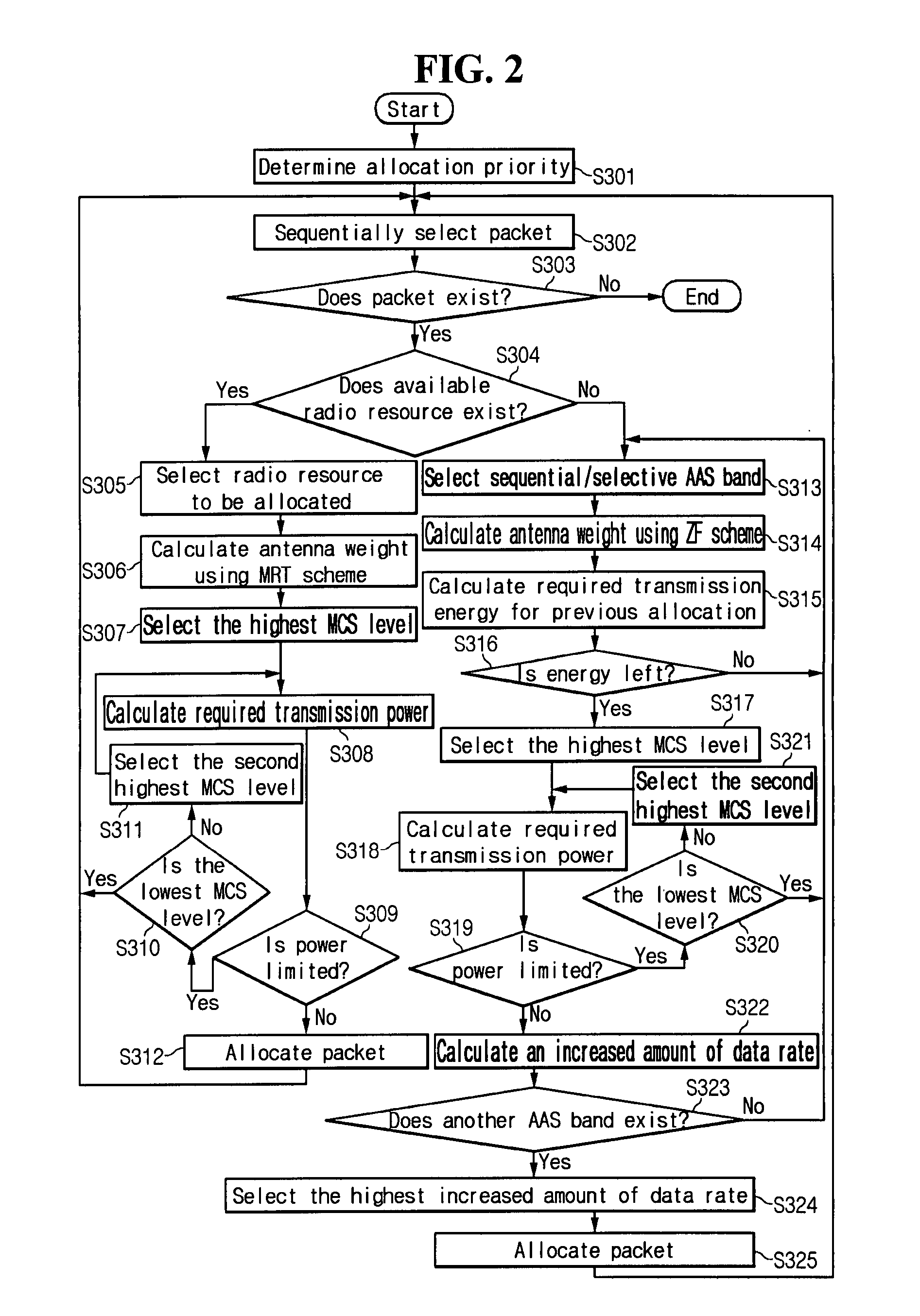Method of allocating resource in base station
a technology of resource allocation and base station, which is applied in the direction of wireless communication, wireless commuication services, transmission, etc., can solve the problems of difficult application of sdma, inability of base station to know the signal to interference-and-noise ratio (sinr) when, and inability of base station to determine the proper mcs for each servi
- Summary
- Abstract
- Description
- Claims
- Application Information
AI Technical Summary
Benefits of technology
Problems solved by technology
Method used
Image
Examples
Embodiment Construction
[0025] The present invention will be described more fully hereinafter with reference to the accompanying drawings, in which exemplary embodiments of the invention are shown. As those skilled in the art would realize, the described embodiments may be modified in various different ways, all without departing from the spirit or scope of the present invention. Accordingly, the drawings and description are to be regarded as illustrative in nature and not restrictive. Like reference numerals designate like elements throughout the specification.
[0026] Further, throughout this specification and the claims that follow, a module is defined as a unit that performs a specific function or operation, and can be realized by hardware or software, or a combination of both.
[0027] A scheduling and resource allocation method of a base station in a communication system according to an exemplary embodiment of the present invention will now be described in further detail. The exemplary embodiment of the...
PUM
 Login to View More
Login to View More Abstract
Description
Claims
Application Information
 Login to View More
Login to View More - R&D
- Intellectual Property
- Life Sciences
- Materials
- Tech Scout
- Unparalleled Data Quality
- Higher Quality Content
- 60% Fewer Hallucinations
Browse by: Latest US Patents, China's latest patents, Technical Efficacy Thesaurus, Application Domain, Technology Topic, Popular Technical Reports.
© 2025 PatSnap. All rights reserved.Legal|Privacy policy|Modern Slavery Act Transparency Statement|Sitemap|About US| Contact US: help@patsnap.com



